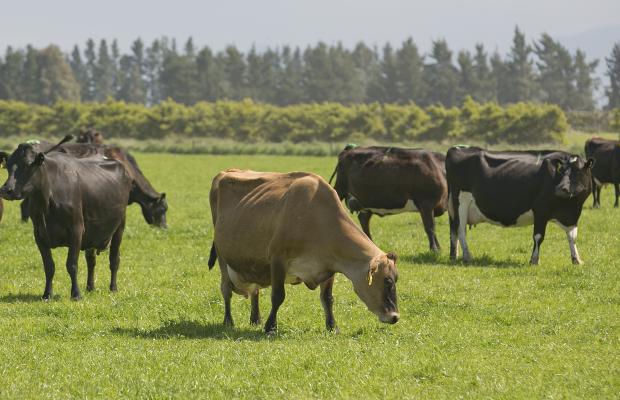Forsyth Barr analysts estimate there is a gap of nearly 90c per kilogram of milk solids between the current milk price and dairy farmers’ break-even point.
Global dairy prices have been under significant pressure this season, with prices hitting a near-five-year low at the Global Dairy Trade auction.
Since the start of the season, prices have fallen at all but one of the fortnightly auctions. The GDT index has dropped more than 12% since the June 6 auction.
The weakened price is largely down to lacklustre demand from China, the world’s biggest market for dairy and Fonterra’s biggest market for whole milk powder (WMP).
The dairy giant slashed its forecast twice in August and is currently forecasting a farmgate payout of between $6 and $7.50 per kilogram of milk solids (kgMS), with a midpoint of $6.75.
There was some relief last week, with WMP prices increasing 5.3% at the latest auction.
Given that increase and current foreign exchange rates, Forsyth Barr (Forbar) estimated that it translates to a farmgate milk price of $6.69/kgMS.
In the investment house’s latest Dairy Digest report, its analysts also estimated a break-even milk price for the current season of $7.55/kgMS.
That leaves a shortfall of around 86c/kgMS.
The Forbar analysts said that the current downturn in milk prices appears “broadly consistent with other cycles, albeit with the potential for softness to persist”.
New Zealand remains a bulk commodity exporter “very much at the whim” of global demand, so while China’s demand remains muted, milk prices are likely to remain soft.
The analysts said that “Chinese economic weakness is persisting. Signs suggest the downturn in demand appears to be cyclical rather than structural in nature.”
Also, the “natural inclination” as to why China’s import demand and milk prices are under pressure is that there has been a “step-change” in local supply dynamics within China, the analysts said.
“In China, increased nationalism and local demand is evident across several industries post-covid-19, particularly in the case of infant formula. While this could have a meaningful impact longer term, this doesn’t appear to be a core driver with dairy commodities in China currently.”
Rising nationalism was a longer-term risk, but it appears unlikely to have a “meaningful impact” over the next few years, they said.
Forbar’s estimated break-even milk price of $7.55/kgMS compares to a 10-year average of $6.40.
Last month, DairyNZ forecast a break-even of $7.51/kgMS for the current season, down from $8.16.
Forbar’s analysts said despite the likely “substantial” Fonterra dividends – of around 77c/kgMS – they assume some farms will struggle to break even this season.
Looking beyond the current season, they said, assuming milk prices stay in the high $6 range, profitability continues to look challenging, not helped by elevated interest costs.
“That said, this cyclicality is familiar to farmers, and farmers will be mindful that costs were successfully cut (primarily farm working expenses) in the last cycle, so there is flexibility should milk prices weaken further.”










